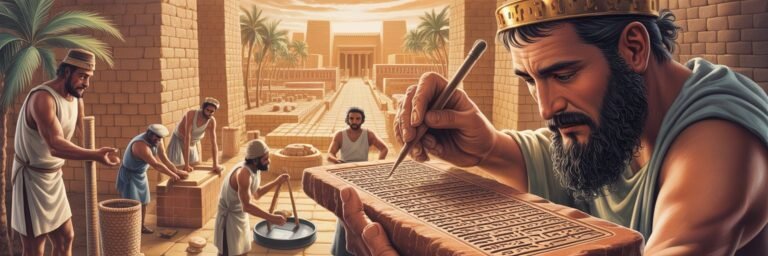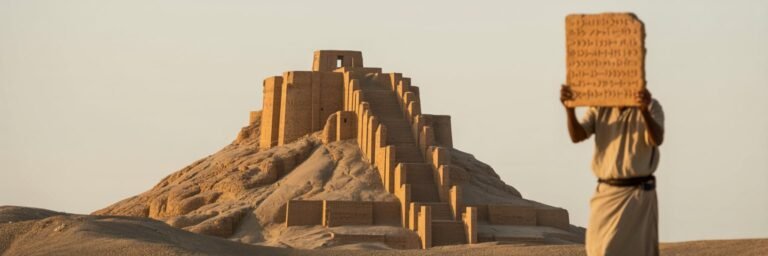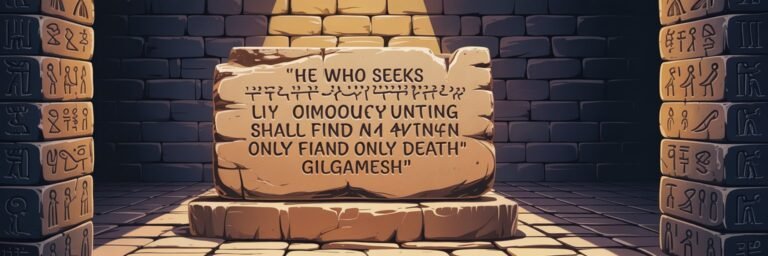INTRODUCTION
The annals of human history are adorned with epics of civilizations that rose, propagated, fought, and ultimately faded, yet left behind traces that shaped the course of future societies. Among these storied civilizations, ancient Mesopotamia stands as a formidable behemoth, not merely because of its ancient origins, archaeological discoveries, or myth-filled narratives, but because it fundamentally transformed human society. The following exploration unravels the strands of Mesopotamia’s ancient story, capturing its quintessential spirit and examining how it forever changed the world.
HISTORICAL BACKGROUND
Rooted between the Tigris and Euphrates rivers, “Mesopotamia”, literally translating to “Land between the Rivers”, was an ancient region located in Eastern Mediterranean corresponding modern-day Iraq and parts of Syria, Iran, and Turkey. It was the nurturing cradle to some of the earliest civilizations known, starting with the Sumerians in 5000 BCE, followed by Akkadians, Babylonians, Assyrians, and Persians.
Mesopotamians began with creating simple pit-houses that evolved into intricate city-states such as Uruk, Ur, and Eridu. From barren lands, they transformed the river valley into an irrigated paradise, achieving surplus production. The Sumerians are credited with inventing cuneiform script, arguably the earliest written language, around 3200 BCE.
THEORIES AND INTERPRETATIONS
Academics often argue that the primary catalyst to the flourishing of ancient Mesopotamia was the strategic geographic positioning and fertile soil, courtesy of the Tigris and Euphrates rivers. According to the Hydraulic Hypothesis proposed by Wittfogel in 1957, advancements in agriculture through irrigation systems birthed structured societies and induced a territorial sense leading to city-state formation.
Furthermore, another pivotal interpretation builds on the notion of ‘Necessity being the Mother of Invention’. Mesopotamia lacked numerous necessities such as timber, stone, and metal, forcing them to trade surplus grain, textiles, and crafts with neighboring civilizations in the Indus Valley and ancient Egypt. Such exchanges spearheaded globalization, elevating Mesopotamia into a robust hub of inter-regional interaction.
MYSTERIES AND CONTROVERSIES
Despite several achievements, Mesopotamia’s history isn’t devoid of mysteries and controversies. One such stalemate continues around the decipherment of Sumerian language, which was superseded by Akkadian and extinct by 2nd millennium BCE, leaving no relatable modern languages for comparison. Linguistic factions idolize either Sumerian’s agglutinative nature, or its influence on Semitic languages, both having significant but contrasting implications on language evolution theories.
The greatest controversy remains the Epic of Gilgamesh, dated to the Old Babylonian period around the 18th century BCE. This ancient literary masterpiece recounts the exploits of Gilgamesh and his pal Enkidu, including their encounter with the flood myth, bearing striking similarity to the Biblical Noah’s Ark story. The nature of the correlation between these narratives—whether one influenced the other or they independently convey a universal flood myth—remains a contested debate among historians, theologians and literary scholars alike.
SYMBOLISM AND CULTURAL SIGNIFICANCE
Ancient Mesopotamia carried profound symbolism, particularly in its art, religion, and architecture. Ziggurats, massive tiered temples reaching heavenward came to embody Mesopotamian religious ethos and their liaison with divine. Additionally, cylinder seals crafted with intricate designs often depicted rituals, gods, and mythology, acting as signatures denoting the owner’s identity and social status.
A number of Mesopotamian myths and narratives significantly molded human conflict, desire, divinity, and cosmic understanding. For instance, the Epic of Gilgamesh encapsulated themes of mortality, friendship, and heroism, while the Enuma Elish illustrated the intricate cosmogony of Babylonian theology.
MODERN INVESTIGATIONS
Recent archaeological investigations have unraveled new facets of Mesopotamian civilization. One most noteworthy advancement comes from the electronic Pennsylvania Sumerian Dictionary (ePSD), an ongoing initiative to collate and decipher nearly 100,000 cuneiform tablets scattered across the globe. Also, satellite imaging utilized by the ‘Corona Atlas Project’ has aided the detection of ancient settlements, canals, and roads in Mesopotamia, widening the lens of our understanding.
Another burgeoning field is the genomic study of Mesopotamians. As demonstratively proven by a 2018 genetic analysis of skeletons from Mesopotamian graves, modern Middle Eastern populations were shaped by a greater melting pot of civilizations, thus illuminating our understanding of human mobility, admixture, and adaptation.
LEGACY AND CONCLUSION
Mesopotamia’s influence has lingered long after its decline, having indelibly impacted global civilization. Mesopotamians established the concepts of algebra, geometry, and astronomy, that later laid foundations for Greek science. The Code of Hammurabi—the earliest comprehensive law code—has informed much of today’s common law. As the birthplace of writing, literature, and governance, Mesopotamia’s contributions can be traced in contemporary infrastructure, medicine, arts, and beyond.
Circling back to the loom of history, as we unravel its intricacies and weigh the legacy of past civilizations, Mesopotamia emerges as a civilization whose innovations and intellect, ethos and iconography, mythos and mysteries, have continually suffused human consciousness, persistently reshaping societies and their histories. As thinkers, scholars, and students of the past, it is our ongoing endeavor to unravel, comprehend, and carry forth the profound heritage of this remarkable ancient civilization to illuminate the roads not taken, the lessons learnt, and the paths forward.






